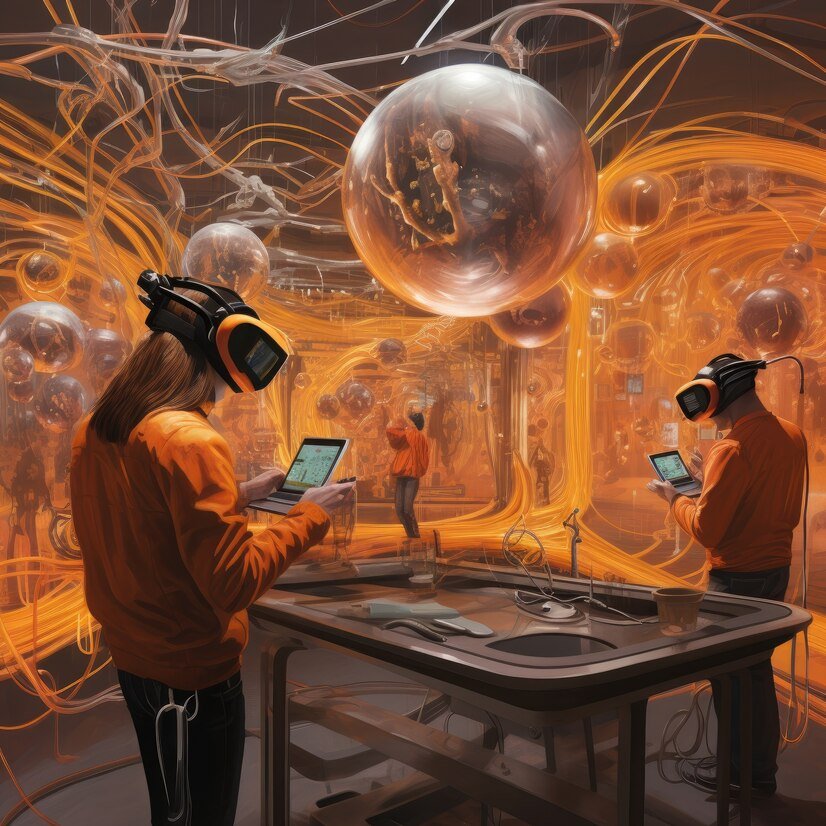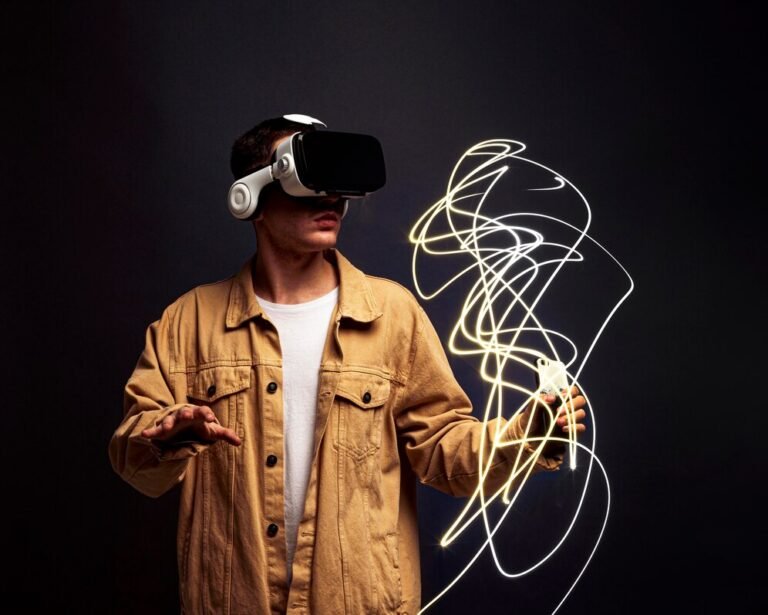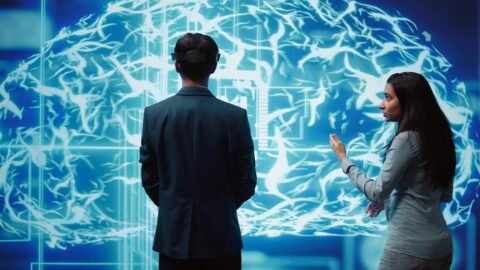Table of Contents
Introduction
In the modern world, creativity and technology are no longer gmdp-516-01 creative technology 1 separate spheres of influence. Over the past few decades, the fusion of these two domains has created groundbreaking possibilities across industries. The result is creative technology, a sector where design, imagination, and innovative technologies merge to produce stunningly new ways to interact, create, and experience. At the forefront of this revolution is gmdp-516-01: creative technology 1 an advanced creative technology framework that allows for the realization of these creative visions in unprecedented ways.
Whether we are talking about immersive experiences in entertainment, intelligent systems in healthcare, generative design in architecture, or personalized learning in education, creative technology, powered by frameworks like GMDP-516-01, has already begun to transform how we approach problem-solving and artistic expression.
This article will dive deeply into the concept of creative technology, its significance across various industries, and the ways gmdp-516-01 creative technology 1 is driving innovation. By exploring specific applications, trends, and potential developments, we’ll examine how this technology is unlocking creativity, pushing boundaries, and shaping the future.
Understanding Creative Technology
Creative technology is a term that refers to the integration of advanced technological tools and methodologies with the processes of creative design and artistic expression. Unlike traditional technology, which often serves a functional or practical purpose, creative technology blurs the lines between utility and artistic endeavor. It’s about applying technology in ways that inspire innovation and new forms of art, communication, and interaction.
The goal of creative technology is not simply to use technology for technology’s sake; it’s about using the tools available to solve creative challenges in unique and efficient ways. These tools might include artificial intelligence (AI), virtual reality (VR), augmented reality (AR), machine learning (ML), generative design, interactive media, and even robotics.
Creative technology enables designers, developers, and artists to experiment with new forms of creative expression, making it possible to create products, services, and experiences that would be impossible without the integration of advanced technology.
The Role of GMDP-516-01 in Creative Technology
gmdp-516-01 creative technology 1 is an advanced framework that provides a structured approach to integrating creative design with modern technologies. It empowers creators to explore new avenues for innovation, helping to streamline processes, increase efficiency, and push creative boundaries. The framework includes a set of methodologies, tools, and technologies that make it easier for professionals in various industries to incorporate cutting-edge technologies into their creative projects.
GMDP-516-01 is highly flexible, supporting the development of products across various sectors, including:
- Design: From industrial design to product prototyping and architecture, creative technology is revolutionizing how designers approach the creation process. GMDP-516-01 makes it easier for designers to collaborate, experiment with new ideas, and seamlessly integrate innovative technologies into their work.
- Entertainment: Video games, film production, and digital media have embraced creative technology to engage audiences in unprecedented ways. The immersive power of VR, AR, and real-time rendering tools within the framework of GMDP-516-01 has created completely new entertainment experiences.
- Healthcare: AI-driven diagnostics, robotic surgery, and virtual health experiences are some of the examples where gmdp-516-01 creative technology 1 is being used to fuse creative technology with medical advancements, making healthcare more effective and accessible.
- Education: The integration of AI-powered personalized learning systems, VR-based simulations, and interactive tools has transformed traditional educational methods, providing more engaging and efficient learning experiences.
- Advertising: GMDP-516-01 enables advertisers to push the limits of creativity with interactive and immersive advertisements, driven by AR/VR, personalized AI tools, and generative design techniques.
By leveraging GMDP-516-01, industries can quickly adapt and benefit from creative technology’s vast potential, unlocking new solutions, improving efficiency, and staying ahead of competitors.
The Key Components of Creative Technology
Creative technology thrives on the integration of various components that work together to achieve innovative solutions. Some of the key technological pillars that support creative endeavors include:
1. Artificial Intelligence (AI) and Machine Learning (ML)
AI and machine learning are among the most transformative forces in the world of creative technology. These technologies enable machines to analyze large datasets, identify patterns, make predictions, and even create new content.
For example, AI can help artists generate new music, visual art, or even literature. Machine learning algorithms can optimize designs or product prototypes by analyzing existing trends and learning from past iterations. In the entertainment industry, AI is used to generate content, create characters, and even predict audience preferences, creating highly personalized experiences.
2. Augmented Reality (AR) and Virtual Reality (VR)
AR and VR have opened up a new frontier for immersive experiences. These technologies combine the physical and digital worlds, allowing users to interact with virtual objects and environments as though they were real.
For instance, gmdp-516-01 creative technology 1 is often used in VR gaming to develop environments where players can feel completely immersed. In the architecture industry, VR helps clients experience designs before they’re built, offering virtual walkthroughs of buildings or products.
Augmented reality, on the other hand, overlays digital content onto the physical world. In marketing, this allows customers to visualize products in real-time, and in education, AR can create interactive learning experiences that enhance student engagement.
3. Generative Design
Generative design is a form of AI-driven design that uses algorithms to automatically generate design options based on a set of parameters. In creative technology, this tool is used to create everything from industrial products to architectural models.
With generative design, gmdp-516-01 creative technology 1 users can input functional requirements and material constraints, and the system will generate a range of potential designs. This process not only speeds up the design phase but also often results in more optimized, innovative solutions that would be difficult for human designers to imagine.
4. Interactive Media
Interactive media includes technologies such as touch screens, motion sensors, and user interfaces that allow for more dynamic interactions between the user and the content. Interactive installations, interactive storytelling, and participatory design processes are all part of creative technology.
In the realm of advertising, for example, gmdp-516-01 creative technology 1 can enable the creation of interactive ads that engage consumers, making them part of the experience. These experiences can be personalized in real-time based on user behavior and preferences, offering more meaningful and engaging brand experiences.
5. Robotics
Robotics has made significant strides in both manufacturing and creative industries. In areas like interactive art, robotics can be used to create installations that respond to viewers’ movements or gestures. Artists and designers are now able to design robots that perform intricate, artistic tasks or interact with human audiences in meaningful ways.
In healthcare, robots designed with gmdp-516-01 creative technology 1 can assist in surgery, rehabilitation, and personalized treatment. The combination of AI and robotics is revolutionizing fields like automation and precision engineering, leading to smarter, more adaptive systems that can collaborate with humans in real-time.
Applications of Creative Technology Powered by GMDP-516-01

1. Entertainment & Media
The entertainment industry has long been a leader in adopting creative technology, with films, video games, and digital media constantly evolving due to the integration of new tools and technologies.
Video Games
Video games have benefited immensely from creative technology. Game developers are using gmdp-516-01: creative technology 1 to create more immersive, realistic, and adaptive gaming experiences. Augmented and virtual reality play a central role in the evolution of games, where players can now experience fully interactive environments. Machine learning is used to design AI-powered NPCs (Non-Player Characters) that adapt to player actions, making games more dynamic and challenging.
Film & Animation
Filmmakers have adopted motion capture, real-time rendering, and 3D animation to create stunning visual effects (VFX) that blur the lines between fantasy and reality. AI-driven algorithms can assist with post-production editing, color grading, and special effects creation, reducing the time and effort traditionally required in film production.
Music
In the music industry, gmdp-516-01 creative technology 1 is being used to create AI-driven music composition tools, interactive sound design, and generative algorithms that help artists explore new soundscapes. Musicians can now leverage creative technology to create adaptive soundtracks that respond to audience behavior or environmental factors.
2. Design and Architecture
Creative technology has had a profound impact on design and architecture, enabling professionals to optimize their workflow and produce innovative, functional designs.
Generative Design in Architecture
Architects are increasingly using gmdp-516-01 creative technology 1 for generative design, allowing algorithms to propose a wide array of design possibilities. These AI-driven solutions optimize structural integrity, energy efficiency, and aesthetics based on real-world constraints.
3D Printing
3D printing has revolutionized prototyping and manufacturing in the design world. GMDP-516-01 empowers designers to rapidly prototype complex designs, test different iterations, and create functional products. This reduces the need for traditional manufacturing and speeds up the product development cycle.
3. Healthcare and Medicine
The healthcare industry has embraced creative technology in numerous ways, from improving diagnostics to offering new treatment options.
AI in Diagnostics
AI-powered diagnostic tools help medical professionals analyze complex medical data, such as X-rays, CT scans, and patient histories. Machine learning algorithms can detect patterns that human doctors
may overlook, providing earlier and more accurate diagnoses.
Surgical Robotics
With the integration of GMDP-516-01, robotic systems can assist in surgeries with unparalleled precision. These robots are controlled by highly advanced AI algorithms that analyze data in real-time, assisting surgeons with making better decisions during operations.
Telemedicine and Virtual Health
Telemedicine has grown exponentially, especially in the wake of global events like the COVID-19 pandemic. Virtual health consultations, AI-powered symptom checkers, and VR therapy solutions have all been developed using creative technologies to enhance healthcare accessibility and efficacy.
4. Education
In the realm of education, gmdp-516-01 creative technology 1 enables the creation of engaging, personalized learning experiences that can be tailored to each student’s needs.
AR/VR Learning Tools
By incorporating AR and VR into classrooms, teachers can provide students with immersive experiences that make learning more engaging. For example, medical students can practice surgeries in a virtual environment, while history students can explore ancient civilizations firsthand.
AI-Powered Learning Systems
AI-powered platforms analyze student performance and adapt lessons to individual needs, ensuring that students receive the right level of challenge and support. These systems can provide real-time feedback and recommendations for improvement.
Future Trends in Creative Technology
As the capabilities of technology continue to expand, creative technology will keep evolving. Some key future trends include:
Metaverse and Virtual Worlds
The metaverse, a fully immersive digital universe where people can interact, socialize, and work, is already beginning to take shape. Powered by gmdp-516-01 creative technology 1 , the metaverse will enable entirely new forms of creativity in design, entertainment, and communication. Virtual worlds will be places where digital creations and interactions can take place in real-time, further blurring the lines between physical and digital realities.
AI and Creativity
AI will play a more significant role in creative fields, providing creators with new tools to enhance their work. For instance, AI-driven content generation will become more sophisticated, enabling everything from automated music composition to personalized interactive experiences.
Quantum Computing
The emergence of quantum computing will push creative technology to even greater heights, enabling the processing of vast amounts of data and the solving of complex problems in real-time. This could lead to breakthroughs in industries like AI, generative design, and simulation.
IoT Integration
The continued development of the Internet of Things (IoT) will create more connected devices, each with the potential to interact with others in innovative ways. As gmdp-516-01 creative technology 1 integrates these devices into creative processes, it will open the door to new forms of smart interactions, especially in fields like healthcare, home automation, and urban design.
Conclusion
Creative technology, supported by frameworks like gmdp-516-01: creative technology 1 is shaping the future of multiple industries. By combining the best of creativity with the power of advanced technologies such as AI, VR/AR, robotics, and generative design, gmdp-516-01 creative technology 1 has unlocked unprecedented levels of innovation.
From entertainment to healthcare, design to education, the impact of creative technology is undeniable. As we move forward, it will continue to be a driving force for solving complex challenges, enhancing human experiences, and pushing the limits of what is possible.
gmdp-516-01 creative technology 1 represents a powerful tool for the future, enabling creators across industries to combine their imagination with cutting-edge technologies. The future of creative technology is bright, and with tools like gmdp-516-01 creative technology 1, we are only scratching the surface of what is possible.






